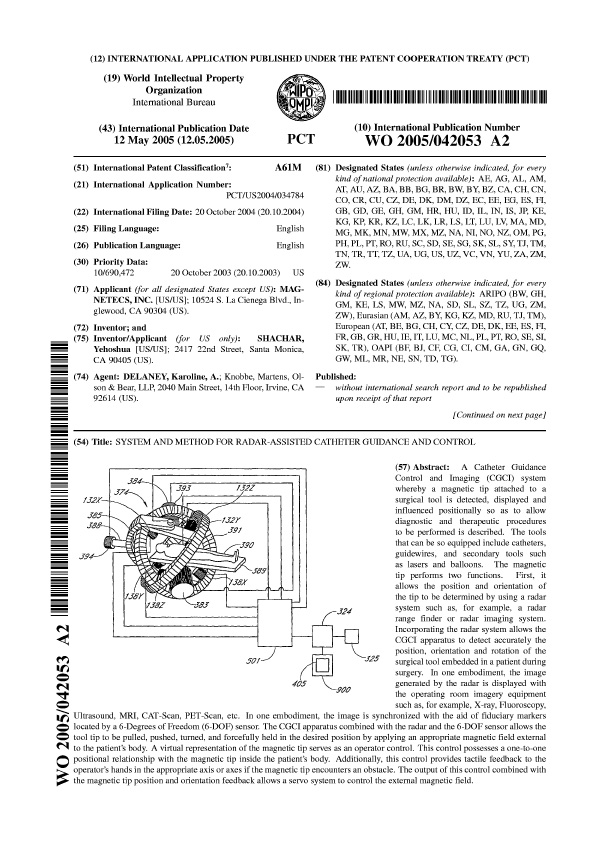PATENTS
System And Method For Radar-Assisted Catheter Guidance And Control
Patent Number: WO 2005/042053 A2
Date Filed: May 12, 2005
Country Filed In: WIPO
Product Application: CGCI
Description:
A Catheter Guidance Control and Imaging (CGCI) system whereby a magnetic tip attached to a surgical tool is detected, displayed, and influenced positionally so as to allow diagnostic and therapeutic procedures to be performed is described. The tools that can be so equipped include catheters, guidewires, and secondary tools such as lasers and balloons. The magnetic tip performs two functions. First, it allows the position and orientation of the tip to be determined by using a radar system such as, for example, a radar range finder or radar imaging system. Incorporating the radar system allows the position, apparatus orientation to detect accurately the position, orientation, and rotation accurately of the surgery. In one embodiment, the image generated by the radar is displayed with the operating room imagery equipment such as example X-ray, Fluoroscopy, Ultrasound, MRI, CAT-Scan, PET-Scan, etc. In one embodiment, the image is located by a 6-Degrees of Freedom (6-DOF) sensor. The CGCI apparatus combined with the radar and the 6-DOF sensor allows the tooltip to be pulled, pushed, turned, and forcefully held in the desired position by applying an appropriate magnetic field external to the patient's body. A virtual representation of the magnetic tip serves as operator control. This control possesses a one-to-one positional relationship with the magnetic tip inside the patient's body. Additionally, this control provides tactile feedback to the operator's axis or axes feedback if the magnetic tip encounters an obstacle. The output of this control combined with the magnetic tip position and orientation feedback allows a servo system to control the external magnetic field.
Field of Use: The Catheter Guidance Control and Imaging (CGCI) system was created to provide physicians the ability to guide a catheter through a patient's body using a robotically-controlled magnetic guidance system. Such a system provides the physician unprecedented accuracy in being able to navigate within the dynamic environment of the patient, create a detailed 3-D mapping, and perform a variety of catheter-based operations with precision control and an ability to return to target at the push of a button. Initial applications for the technology were for the field of Electrophysiology and specifically for the ablation of the heart to treat patients with AFib.

